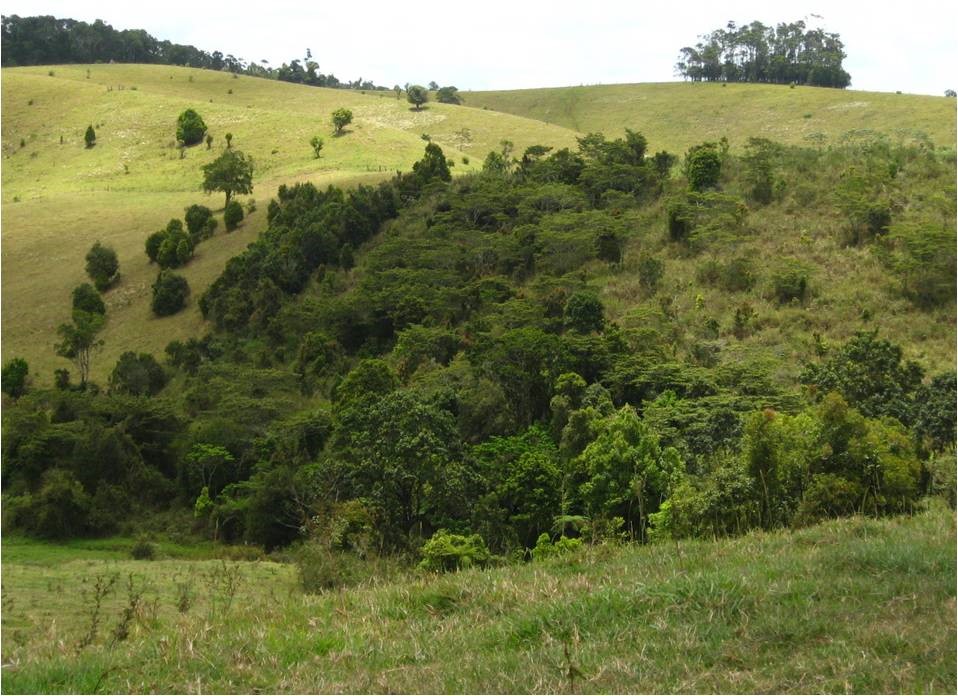By T. Trevor Caughlin, Literature Coordinator
A fundamental choice for tropical reforestation projects is whether to plant trees or rely on natural regeneration to restore tree cover and other ecological properties. Both methods have costs; natural regeneration can be slow and unpredictable, while tree planting can be considerably more expensive and labor-intensive. As the demand for large-scale tropical forest restoration increases, understanding the tradeoffs of these restoration methods is a critical research need. A new paper, written by PARTNERS members Luke Shoo and Carla Catterall, addresses this important knowledge gap with the first landscape-scale comparison of self-organized regrowth and more resource intensive biodiversity plantings.
The study was conducted in the Atherton Tablelands of Queensland Australia, a region that was mostly deforested for agricultural production in the early 20th century. The study used a chronosequence approach to compare sites in reference condition, including pasture and old growth forest, with 28 self-organized regrowth sites and 25 actively restored sites, planted with >20 species of locally native saplings. The reforestation sites spanned a wide age range, from 1 year old to 59 years old. In each site, the authors measured species composition and forest structure. They then reconstructed the developmental trajectories for the active vs. natural regeneration by relating restoration outcomes to successional age.
Overall, results demonstrate the value of biodiverse plantings. Biodiverse plantings gained wood volume, canopy cover and tree height approximately 3 times as fast as natural regrowth sites. The biggest reforestation gains for tree planting were for species richness, which reached about 90% of reference forest species richness after 25 years in biodiverse plantings, compared to only 30% of reference forest species richness after 25 years in natural regrowth sites. These results provide a useful reference for when biodiverse plantings are worthwhile: when the target is to restore tree biodiversity, biodiverse plantings have a clear advantage. However, if the goal is to restore ecosystem structure, such as a closed canopy of trees, natural regeneration may be sufficient. One open question is how long it will take the natural regeneration sites to “catch up” with the biodiverse planting sites. Answering this important question will require long-term monitoring of reforestation sites. Because biodiversity plantings can be hugely more expensive than natural regeneration, a next step in addressing when and where to invest in active forest recovery will be to relate the per hectare cost of both methods to rates of forest regrowth. Ultimately, Shoo et al.’s work provides valuable guidance for strategic restoration decision-making across a range of site types and project resources.
Photo: Young regrowth establishing on a tropical old field in the Atherton Tablelands (photo by Kylie Freebody).
Reference:


